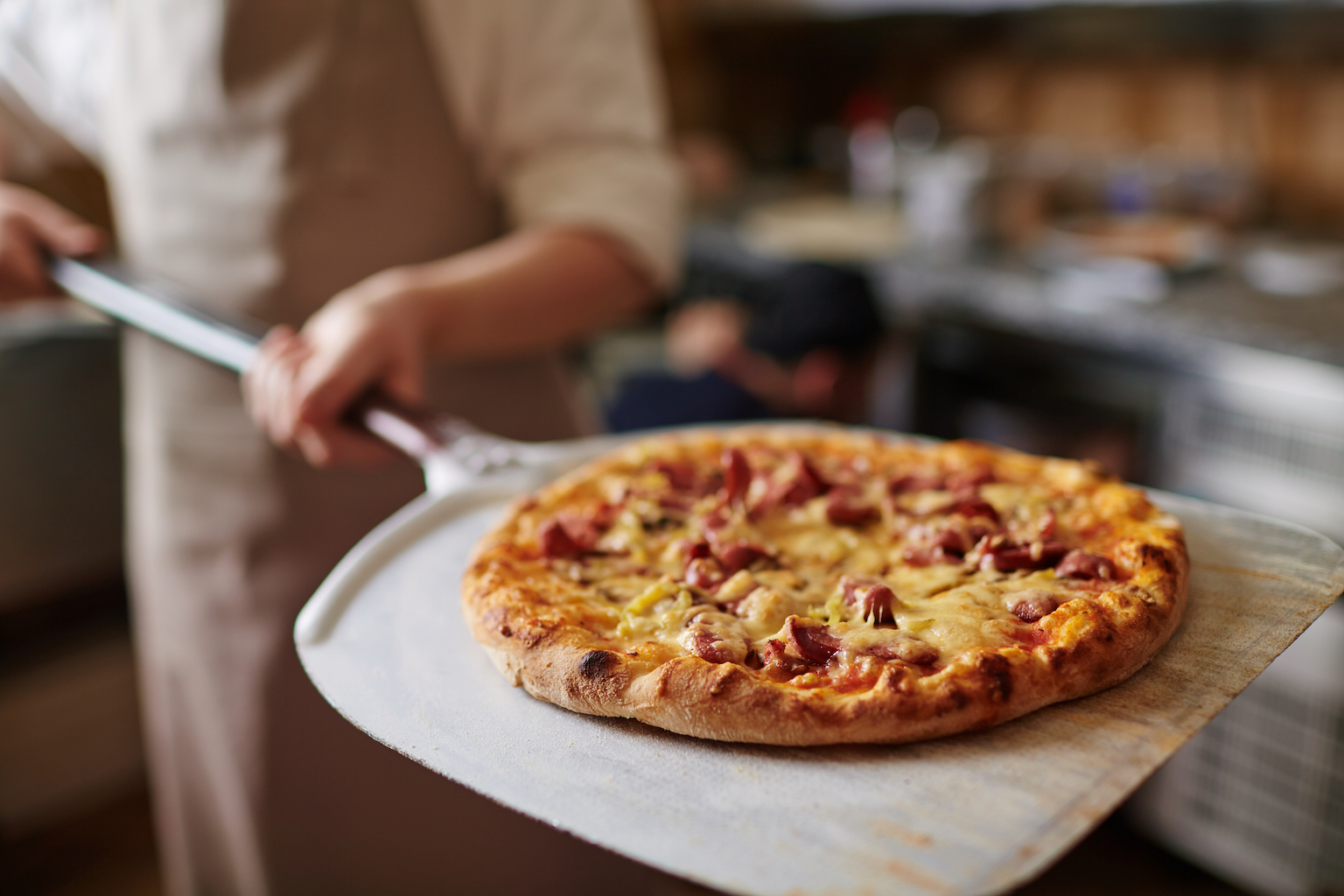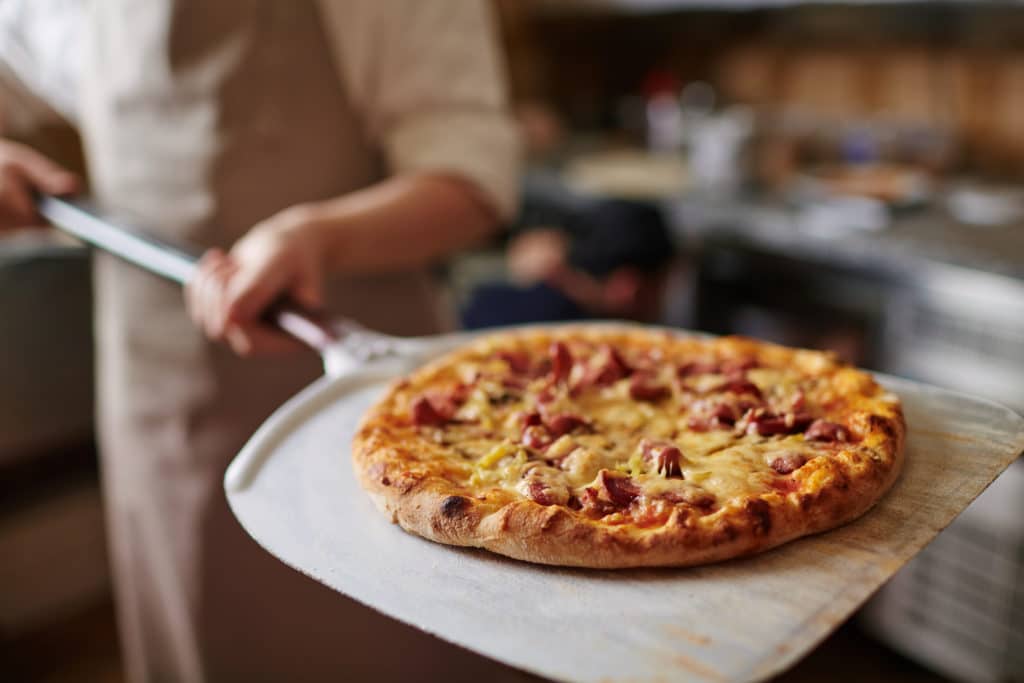
It is very rare to find a pizza establishment without delivery options. If you are one of those without delivery, this is a great time to get on track, as all restaurants continue to delve into delivery options and are forming partnerships with new trends like DoorDash, Grubhub, and UberEats.
Just a few years ago, as reported by the Nation’s Restaurant News, 80% of restaurants are experimenting with delivery options. Don’t be left behind in the delivery scene and miss out on a pocket of regular customers.
The remainder of this article covers the topics to consider in implementing delivery options for your pizza place.
Make Ordering for Delivery Convenient
Convenience for the Customer
When a customer calls or orders pizza online they expect an easy process. If it is confusing or difficult, customers will likely defer to your competitors.
If you are incorporating an online ordering app, take the time to personally test it and engage some regular customers to help test the ordering app. It’s better to find and resolve glitches or hiccups before your pizzeria is completely live for online orders.
Convenience for the Pizzeria Staff
With the idea of ordering and delivery, a specific POS for pizzerias is certain to improve efficiency for staff in many ways. First, orders will come in immediately upon processing, with little room for mistakes or forgotten orders written on a post-it.
Other parts of the POS can help with inventory, ordering, and track data behind the online orders.
Have specific delivery times that are accurate to ensure happy customers. If it is going to take 35 minutes, make sure that is what is communicated to the customer.
Ensure Delivered Orders Will Be Just as Good as Pizza In-Store
Soggy, greasy, cold pizza is not what people expect when they order delivery. Ensure your packaging offers proper airflow, support, and parchment paper to soak up grease during the travel. Most pizza delivery carriers also have insulated bags to carry the boxes during travel. This helps keep the pizza warm and fresh for the consumer.
Space for a Delivery Workstation
When you have decided to deliver pizza, the best practice is to have a workstation specific to deliveries, if space allows. If there is not enough space, you’ll need to seriously consider reorganization of areas to ensure a smooth and consistent delivery experience. The key part of this is ensuring someone other than the driver is checking that the order is complete before leaving the pizza shop.
If you do not have online ordering, be sure to designate at least one phone to be used only for delivery orders. Instill in staff the importance of answering the phone by the fourth ring, as customers will likely give up after more than that. Also, train staff how to:
- Answer the phone with a greeting and offer to talk about current specials.
- Taking orders with legible writing or on an order pad.
- How to potentially upsell orders, such as “Would you like the Large for $3 more?”
Market Delivery Services
There are several avenues to market delivery services, including the packaging itself. For instance, you can easily attach a coupon or flyer for future orders. At a minimum, your packaging should include your pizza business logo and branding, delivery hours, and delivery phone number and website address.
Other ways to advertise your pizza delivery may include:
- Delivery information on in-shop menus, website, social media platforms. Be sure to mention it to carry-out customers.
- Send out targeted direct mail to your delivery area. To keep it from being overwhelming, target specific groups of neighborhoods. Be sure to include a discount code to help track the success of this endeavor.
- Local publications such as independent papers, neighborhood or apartment newsletters.
- The inside or outside of buses or on bus benches.
- Remember social media and target events particularly partial to pizza, such as a football game or a new season of a popular show to binge. Keep in mind to include a link to your ordering site, since it is about convenience, after all.
- Online advertising, which ranges from popup ads, videos, or simple static ads, and pay-per-click on most social media platforms.
- Have a loyalty program for your delivery, such as coupons that are saved up over time, a punch card, or if your services include online ordering, an online loyalty program. It is reported that up to 60% of customers will purchase from a business with a strong loyalty program.
Delivery Staff – Training & Driving
Ensure your delivery staff receive training like your wait staff. They are the face of your pizza establishment and represent your culture, and should greet customers at the door, confirm the order, accept payment or get a signature, and thank them for their business.
Presentation is also important, so be sure delivery staff are presentable. If you do not have a dress code, this is a good time to put one into place. Keep it simple, with jeans or khakis and polo or plain t-shirts, and appropriate shoes.
As for driving, a few additional steps are necessary including:
- The decision of staff driving their own car, or leasing fleet vehicles.
- Fleet insurance or insurance coverage to cover work-related car accidents.
- Proof of driving history for employees and each driver’s proof of insurance.
When the above topics have been tackled, the implementation will take time in staging, training, and a few trial runs. After that, be sure to follow up and perform random customer service surveys with delivery orders, to include quality of the order, friendliness of the driver, and the overall experience.

